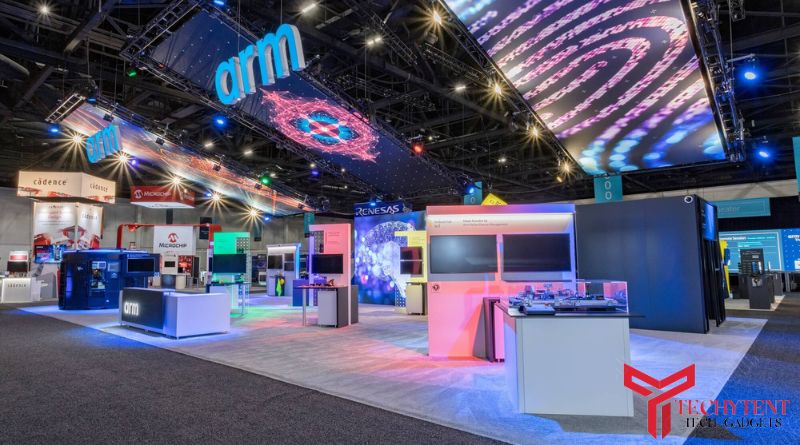Trade shows have long served as vital networking and marketing platforms for businesses across industries. At the heart of these events lies the trade show booth—an ever-evolving canvas that reflects branding, creativity, and technological trends. “The Evolution of Trade Show Booth Design” is a journey that mirrors broader shifts in marketing strategies, consumer behavior, and technological innovation. From humble beginnings with static backdrops and brochure stands to the high-tech, interactive environments seen today, booth design has become a strategic art form.
The Early Days: Simplicity and Functionality
In the early 20th century, trade shows were primarily business-oriented events with a focus on straightforward communication. Booths were often limited to tables draped with cloth, basic signage, and stacks of printed materials. The goal was simple—to provide information and possibly samples to potential clients. Design was utilitarian, with minimal emphasis on aesthetics or branding. These early setups reflected the business culture of the time, prioritizing substance over style.
As trade shows grew in popularity, especially in the post-war economic boom of the 1950s and 60s, companies began to recognize the value of visual appeal. Still, these early booths remained relatively conservative, often constructed from wood or metal frames with printed banners. The emphasis remained on functionality, but with a growing awareness of the importance of standing out on the show floor.
The Rise of Branding in Booth Design
By the 1970s and 80s, marketing professionals began to see trade shows as essential venues for brand positioning. Booth design started to shift from purely informative to visually engaging. Logos, colors, and taglines became more prominent as businesses realized the potential to make a lasting impression through visual identity.
Modular booth systems became more common during this era, offering flexibility and efficiency. Pop-up displays, fabric backdrops, and standardized graphics allowed exhibitors to maintain a consistent brand image across multiple events. This was also the beginning of thematic booth design, where companies would create cohesive visual narratives that aligned with product launches or brand campaigns. The evolution of trade show booth design was no longer just about being present—it was about being memorable.
Technology and Interactivity Take Center Stage
The 1990s and early 2000s brought rapid technological advancements, and trade show booths evolved accordingly. Audio-visual equipment, computer monitors, and touch-screen interfaces became staples of the modern exhibit. Companies used these tools to create interactive experiences, demonstrating products or guiding attendees through brand stories.
Multimedia presentations allowed businesses to communicate complex messages in engaging ways, combining sight and sound to captivate audiences. Interactive kiosks, video walls, and early virtual reality elements began appearing in more advanced booths. This era also marked the shift toward data collection, with lead retrieval systems becoming commonplace. Booths were now not just spaces for presentation but active hubs for engagement and analytics.
The Modern Booth: Immersive, Experiential, and Strategic
Today, the evolution of trade show booth design has reached new heights. Booths are no longer passive displays—they are immersive brand experiences. Companies invest heavily in creating environments that transport attendees into their brand world. From virtual reality simulations to augmented reality demos and gamified interactions, modern booth design is all about creating emotional connections and unforgettable moments.
Custom fabrication, dynamic lighting, large-format LED walls, and soundscapes are used to craft sensory-rich environments. The goal is to create a space where visitors don’t just learn about a product—they feel it. Design agencies specializing in experiential marketing have become key players in this transformation, bringing together architects, designers, and technologists to create impactful exhibits.
Sustainability has also emerged as a crucial element in booth design. As environmental consciousness grows, companies are opting for eco-friendly materials, reusable components, and digital alternatives to printed brochures. The evolution of trade show booth design now includes a commitment to responsible practices, reflecting broader societal values.
The Role of Digital Integration and Data Analytics
One of the most significant shifts in recent years has been the integration of digital tools and data analytics into booth design. RFID badges, beacon technology, and mobile apps now enable exhibitors to track visitor behavior, personalize experiences, and measure ROI with precision. This data-driven approach allows companies to optimize their booth layouts, refine their messaging, and improve overall engagement.
Live social media feeds, real-time polling, and user-generated content walls have become popular features, blurring the lines between physical and digital experiences. These innovations not only enhance visitor interaction but also extend the reach of the booth beyond the confines of the trade show floor.
Global Influences and Cultural Adaptations
As trade shows have become increasingly international, booth design has also had to adapt to cultural nuances and global trends. What resonates in one market may not have the same impact in another. International exhibitors must consider local aesthetics, cultural symbols, and communication styles when designing booths for global events.
This cultural sensitivity has led to more inclusive and diverse design strategies, where visual storytelling and universal themes take precedence. The evolution of trade show booth design now includes the ability to create experiences that resonate across borders, reflecting a more interconnected global business environment.
The Future of Trade Show Booth Design
Looking ahead, the future of trade show booth design promises even greater innovation. With advancements in artificial intelligence, extended reality (XR), and 3D printing, the possibilities for creating fully personalized and adaptive booth experiences are expanding rapidly. AI-driven personalization could tailor booth content to individual visitor profiles, while XR technologies may enable entirely virtual trade show environments.
Hybrid events, combining physical and digital elements, are expected to become more prevalent. This will require booth designs that can seamlessly transition between in-person and online formats. Additionally, sustainability will continue to be a driving force, with new materials and design strategies focused on reducing environmental impact.
As technology continues to evolve and audience expectations grow, the design of trade show booths will remain a dynamic and strategic aspect of event marketing. It will be essential for businesses to stay ahead of trends and invest in designs that not only attract attention but also deliver meaningful, memorable experiences.
Conclusion
“The Evolution of Trade Show Booth Design” is a reflection of broader shifts in how businesses communicate, engage, and inspire. From modest displays with pamphlets to fully immersive brand environments, the transformation of booth design has been remarkable. Each stage of this evolution has brought new opportunities for creativity, connection, and impact. As we move into an increasingly digital and experience-driven era, the trade show booth will continue to be a powerful tool for storytelling, engagement, and brand expression on a global stage.
May Also Read: techytent





